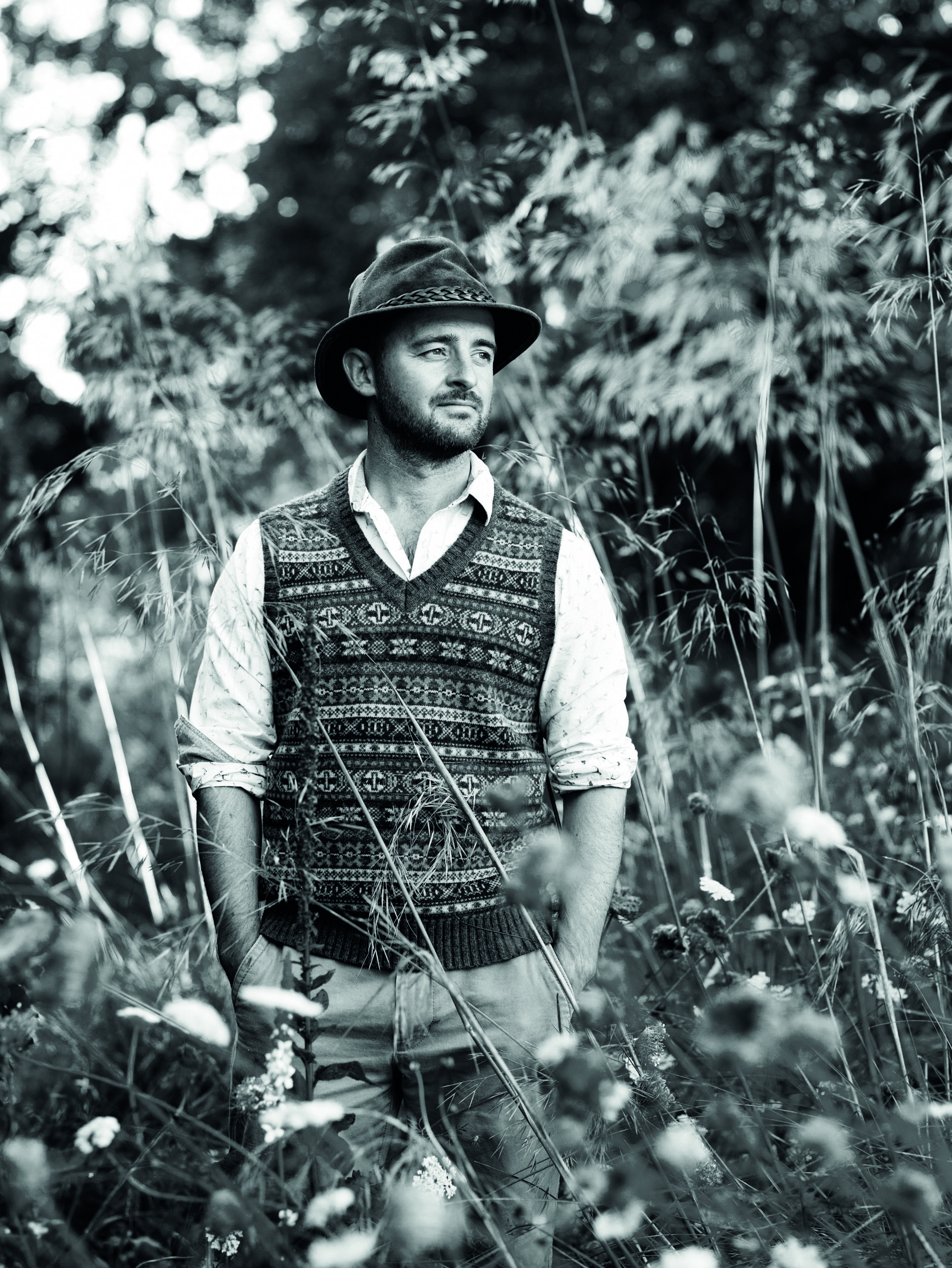At the foot of the South Downs in West Sussex sits a confident, modern house that echoes past traditions. Although visually striking, the house quietly occupies the site of two acres and is sympathetic to its agricultural setting. As if hunkering down, the building is rooted in its location through the use of clever landscaping and considered planting. There is an overriding sense of peace to the property, as the sun filters through the surrounding tree canopy and chickens bustle among the flowerbeds and tall grass. This was not always so. Owners Jo and James Wells bought the property in 2012 and Jo remembers how the southern paddock dominated the site, in part resembling a muddy quagmire that could rival that of a wet Glastonbury Festival.
Undeterred, the couple fell in love with the view south towards the Downs, and James, who leads his own architectural practice, set about designing a new house. Of course, building a new property in a conservative part of the countryside comes with its challenges. James recalls how important it was for the house to feel as though it belonged in its location, and so the couple entrusted the garden designer Chris Moss with the task of creating the garden.
This modern country garden is partly enclosed by trees and hedges in West Sussex. It has constructed topsoil on top of underlying clay flint and is two acres in a temperate climate with warm summers and cool winters. Hardiness zone USDA 8. Read more about the garden below.
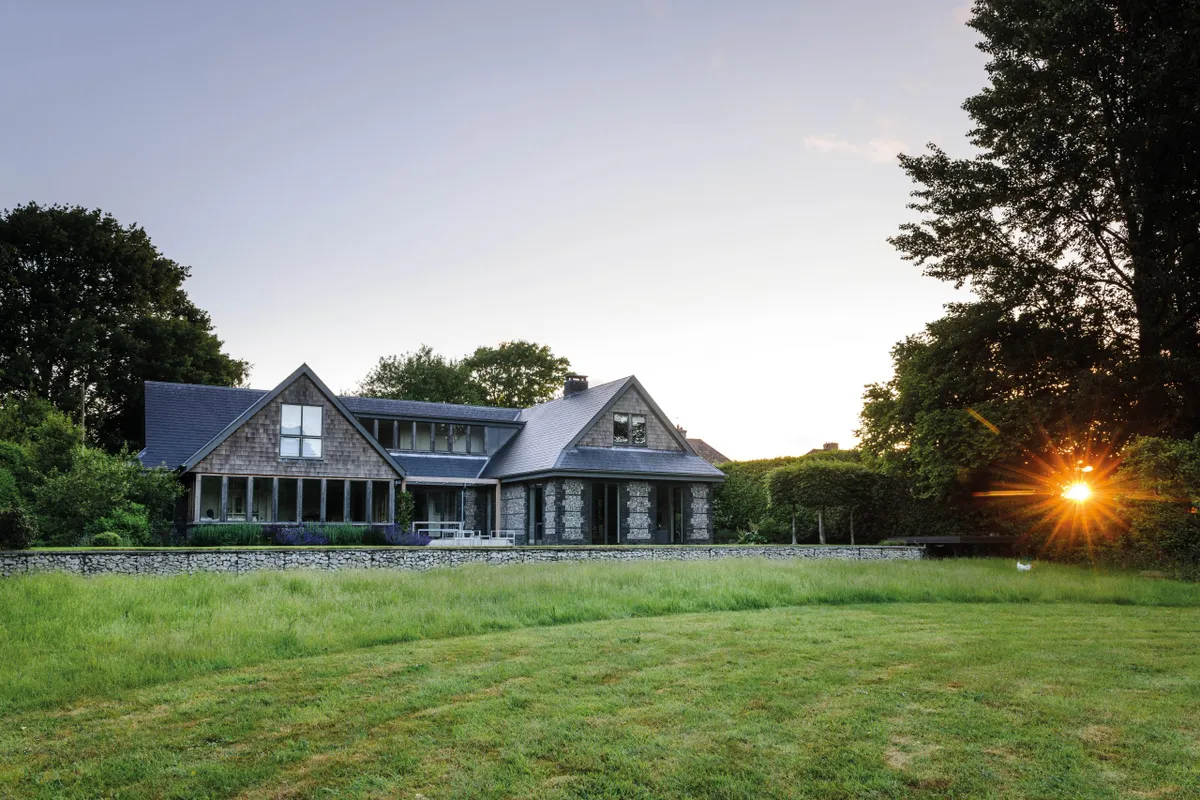
Looking across the meadow and lawn, towards the house the ha-ha breaks up the expanse of grass. Its flint-filled gabions create a pleasing fusion of old and new, much like the rest of the property.
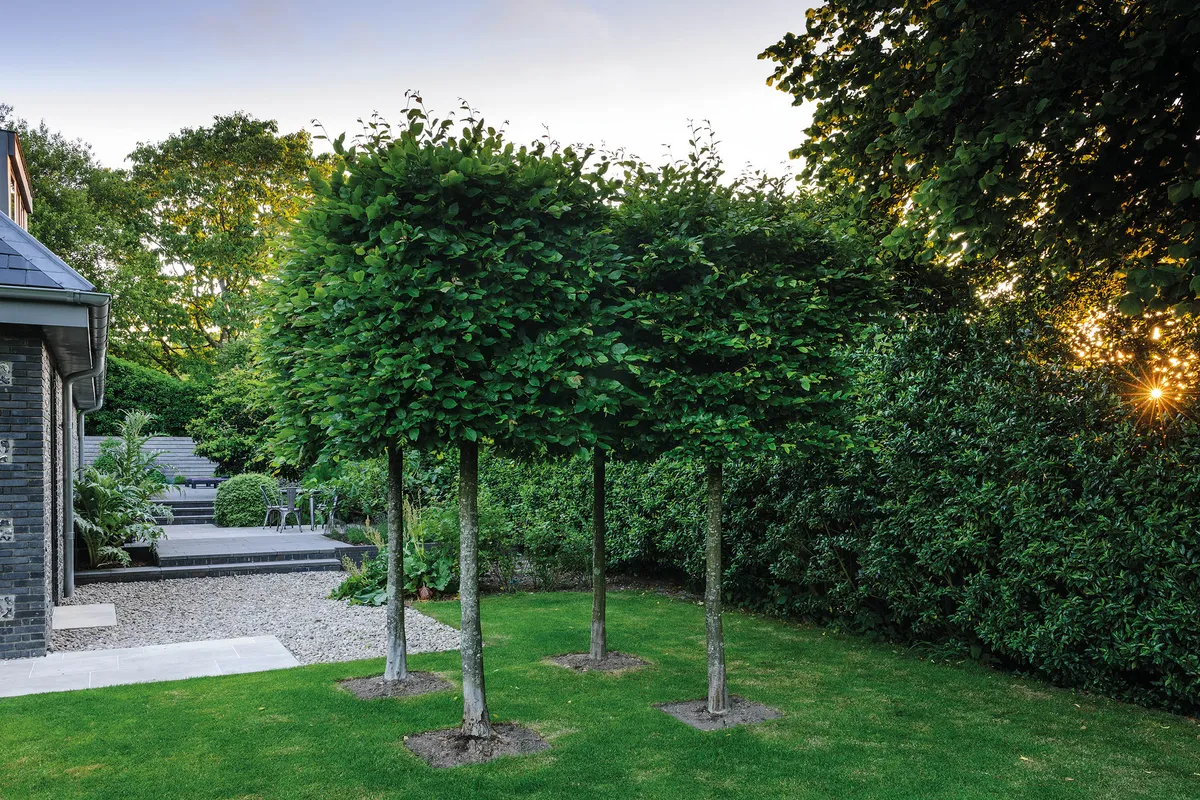
A group of box-pleached hornbeams (Carpinus betulus) act as one to provide a bold structure to offset the house. Terraces and steps work harmoniously around the house to accommodate the changes in levels and provide growing spaces for plants.
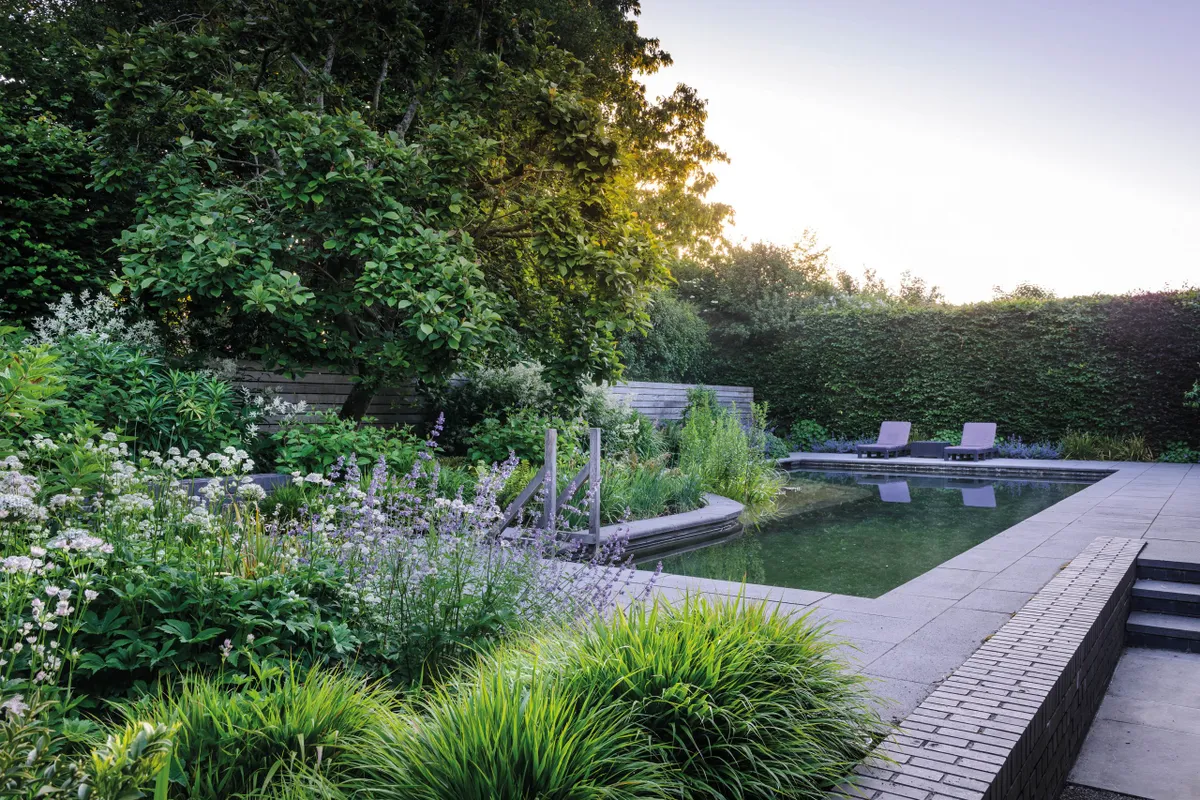
The swimming pool in the north garden uses natural filtration. It creates a reflective focal point for planting, including Astrantia, Hakonechloa and Nepeta,
that weave through Cornus planted for its winter stem colour, ensuring year-round interest.
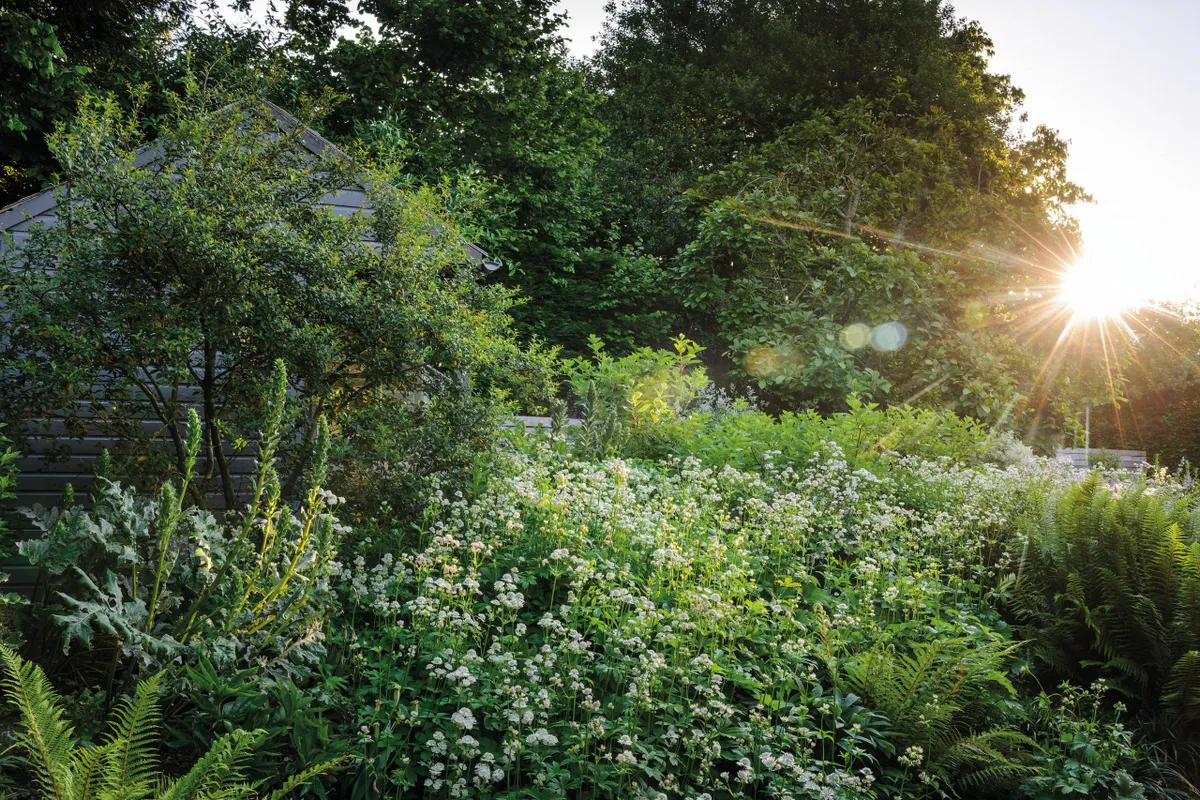
The first of the morning sun sweeps over the north garden, highlighting the tops of Astrantia major ‘Alba’ and Acanthus mollis, as well as the soft fronds of Dryopteris affinis. The restricted and subtle colour palette offer a sense of tranquillity that is reflected in the natural pool beyond.
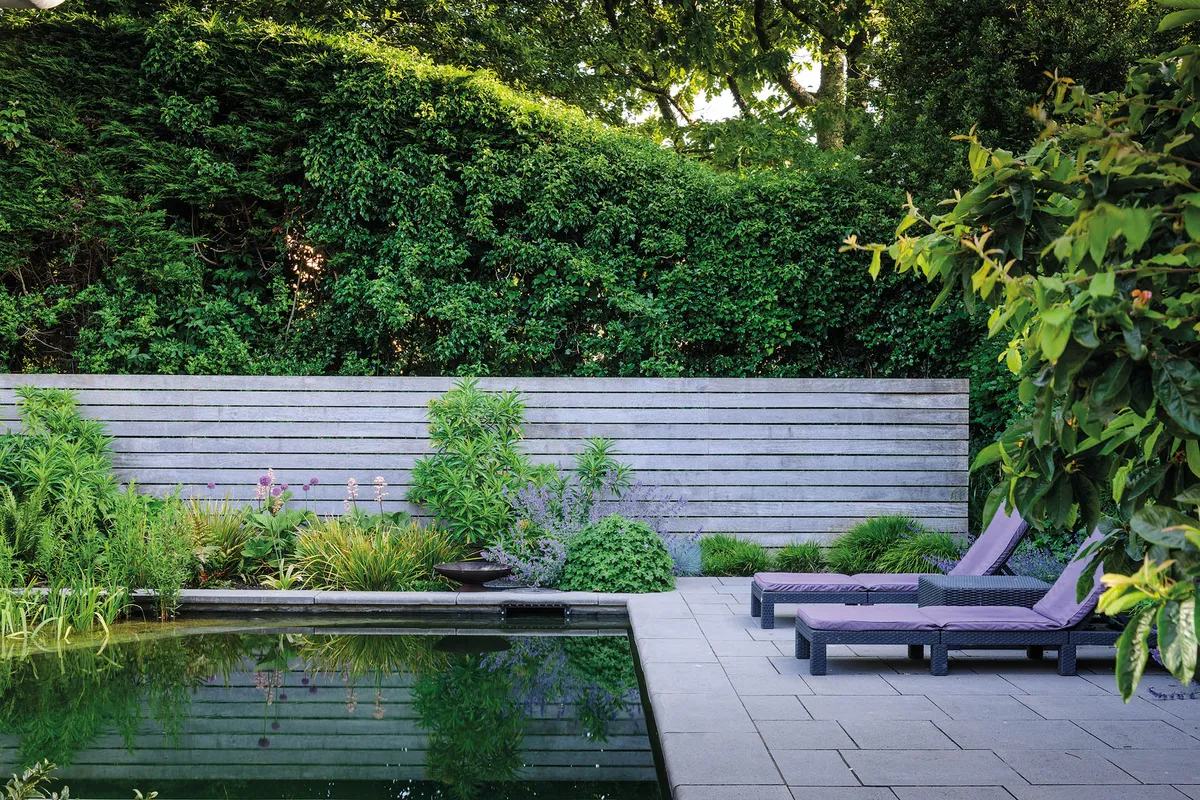
In the planting around the pool, staunch geometry meets soft and exuberant planting. Varying shades of green, in the form of Euphorbia, Hakonechloa, Libertia and Rodgersia, create a pleasing contrast with the grey of the linear screen and uniform paving.
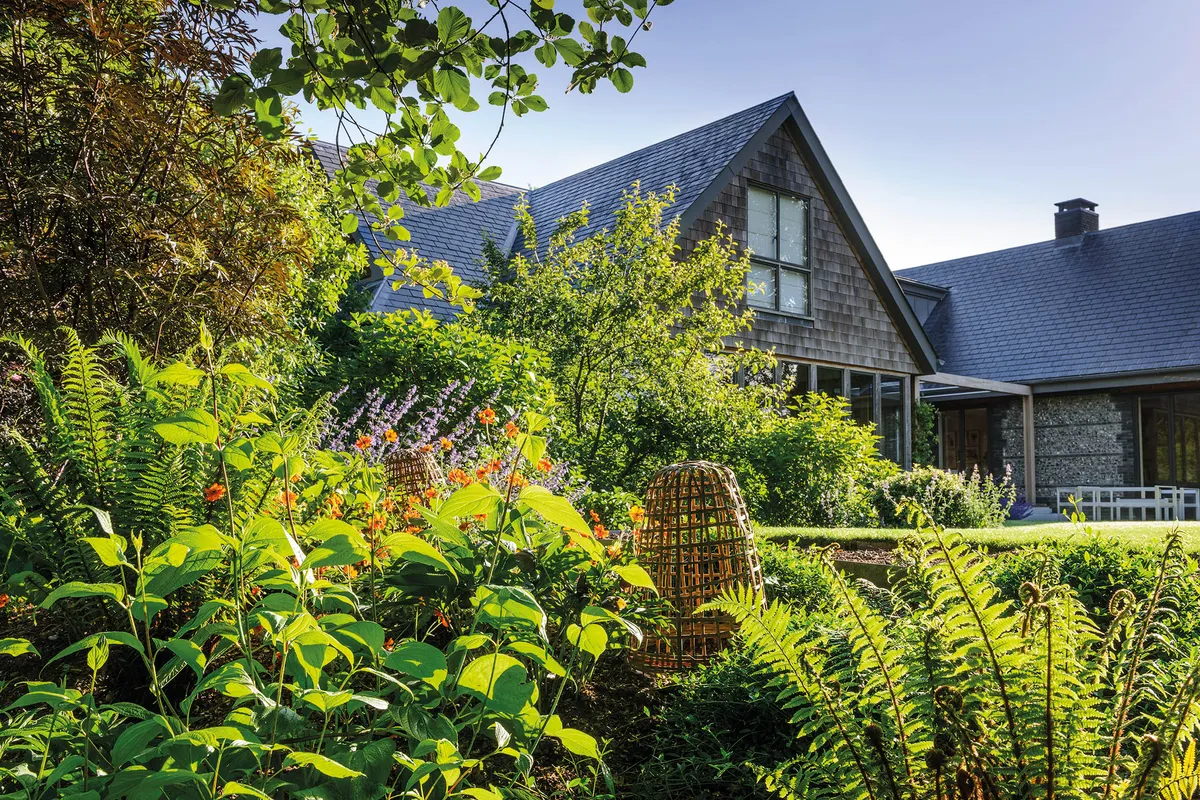
Sun-loving plantings of Echinacea, Nepeta and Geum give way to the architectural foliage of Dryopteris, as the garden slopes away from the house towards the lane.
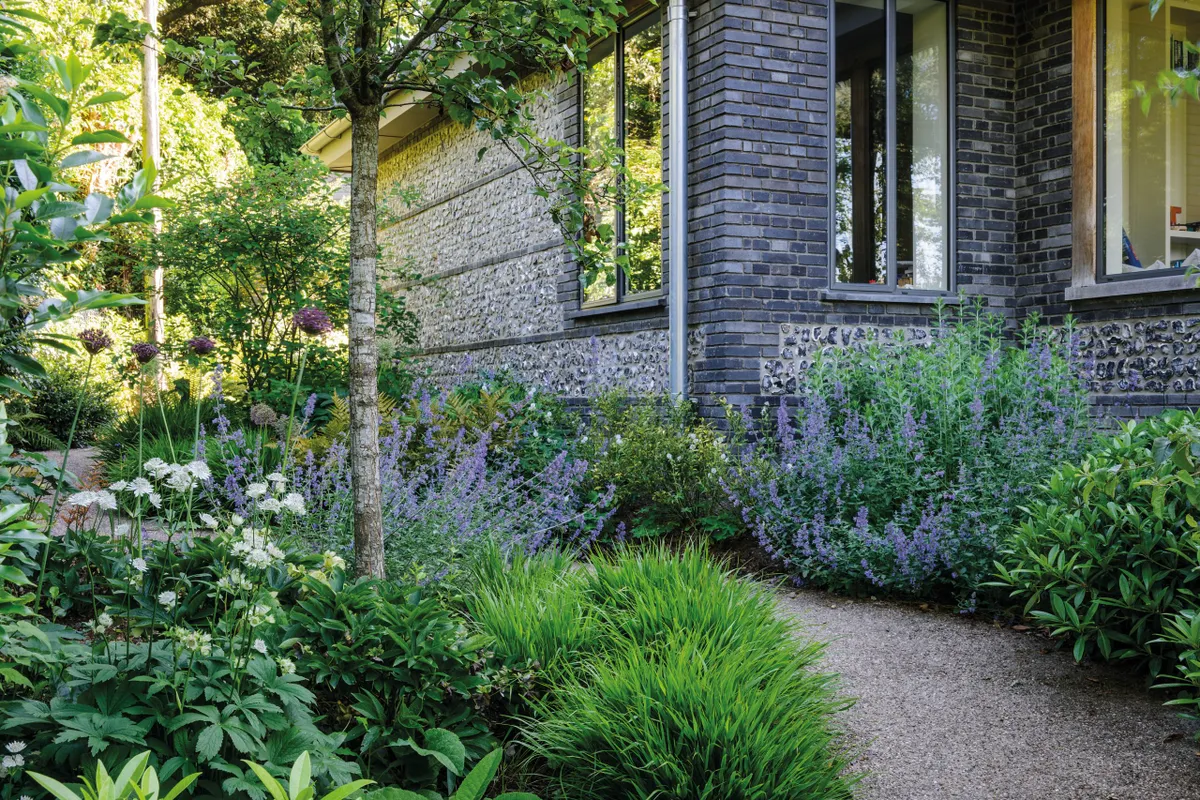
Walking from the front gate up the curved path, the house begins to reveal itself. Softly planted borders of low perennials, are punctuated by Amelanchier x lamarckii and Pyrus calleryana ‘Chanticleer’ to add seasonal interest and a sense of enclosure.
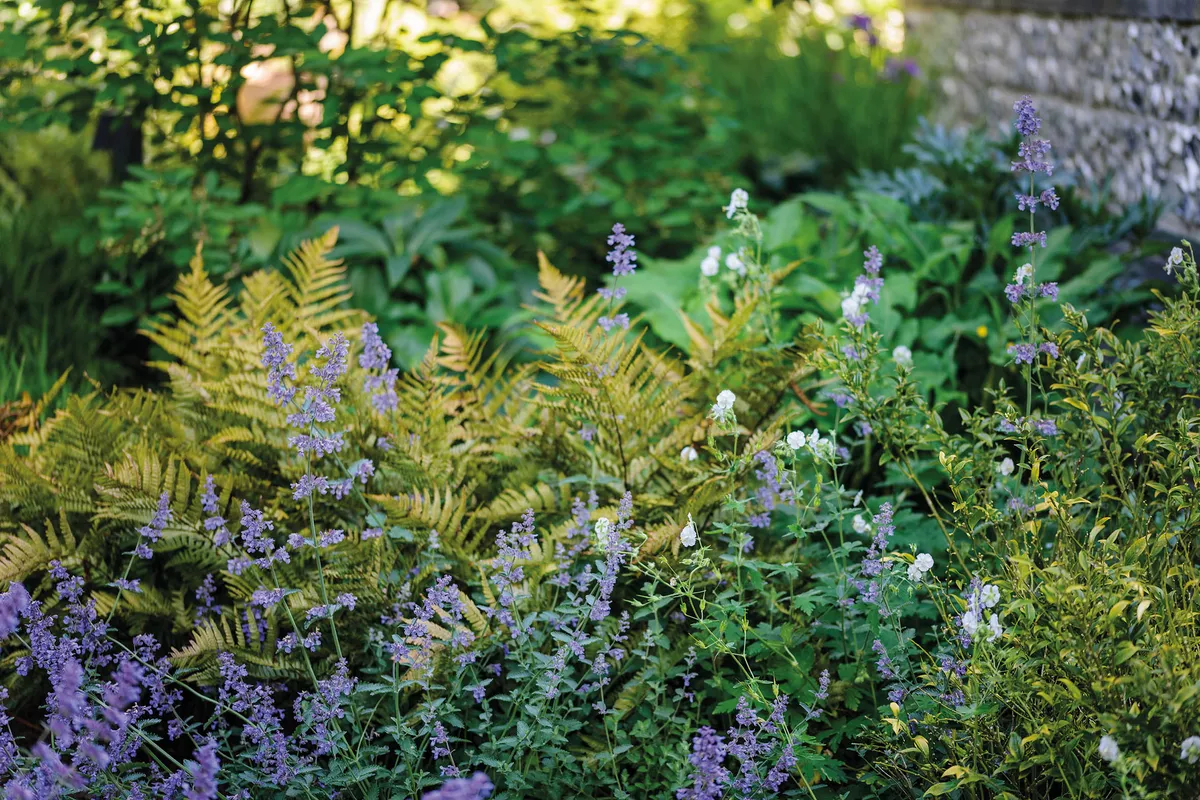
A tapestry of texture and form with Geranium phaeum ‘Album’, Nepeta ‘Six Hills Giant’ and Dryopteris erythrosora knitting together.
Find out more about Chris Moss’s work at chrismossgardens.com
